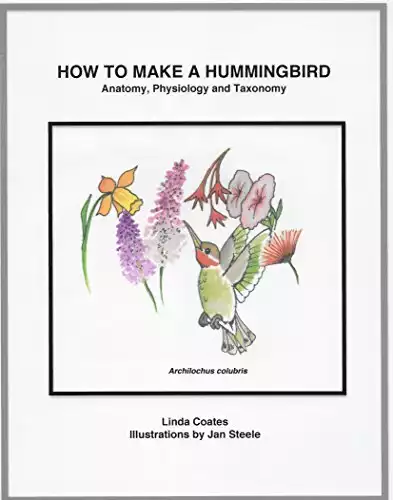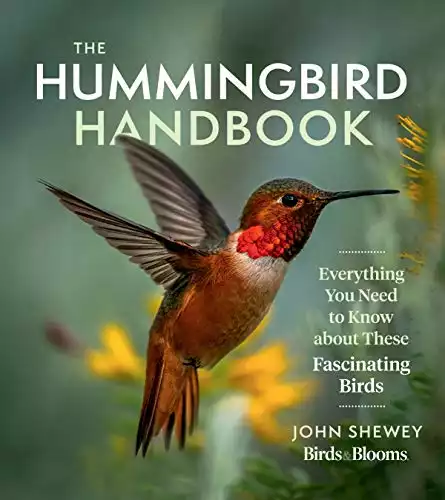There are hundreds of species of hummingbirds – more than 300! So each one has some unique features that differentiate them.
Many hummingbirds can be seen in North America, but you can find the most diverse species in the Andes, where you can see a wide range of hummingbirds everywhere.
Hummingbirds are the only birds that can fly backward and have a long bill that’s unlike any other bird, which is impressive!
Generally speaking, hummingbirds are small birds that live in tropical climates and love tubular plants.
Hummingbird species can be identified when you look more carefully at their colors (especially on the back and throat). Hummingbirds’ wings, tail feathers, and other anatomy parts can help birders differentiate between species.
Some feathers can be very vibrant and iridescent (in males), while others are duller (typically in females).
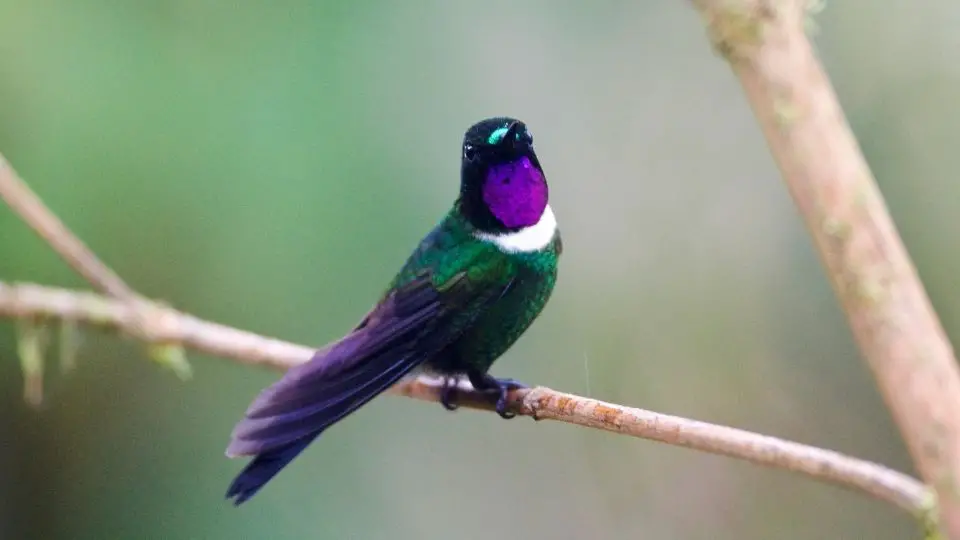
But there’s even more than meets the eye. The way their bodies work is pretty impressive too.
The way a hummer’s body works is essentially an adaptation to their environment – this reflects in their lifestyle, diet, skills, and appearance.
The art of studying the anatomy of a hummingbird is included in the science of ornithology. So let’s identify some essential parts of hummingbirds and try to understand how they work.
The ruby-throated hummingbird is the most common species in the US, so we’re going to focus on its appearance the most when talking about hummingbirds.
Table of Contents
Parts of a hummingbird
Weight
Hummers’ usual body weight is between 2 and 20 grams. The tiniest of them all (the Bee Hummingbird) weighs between 1.59 and 2.01 grams.
Brains
Hummingbirds are pretty bright, and their brain is usually 4.2% of their body weight. The hummingbird brain makes them have a fantastic memory, remembering every flower and plant perfectly (they even remember the feeders they visited before).
Heart
Hummingbirds’ hearts are usually large, occupying about 1.75% and 2.5% of their body weight. Their heart rate is also high, especially when flying when it can reach 1260 beats in one single minute. Hummers also have a considerable concentration of red blood cells (erythrocytes).
Gorget
The gorget (the neck area) is usually different in male hummingbirds compared to female hummingbirds. They are usually more vibrant in color to attract females.
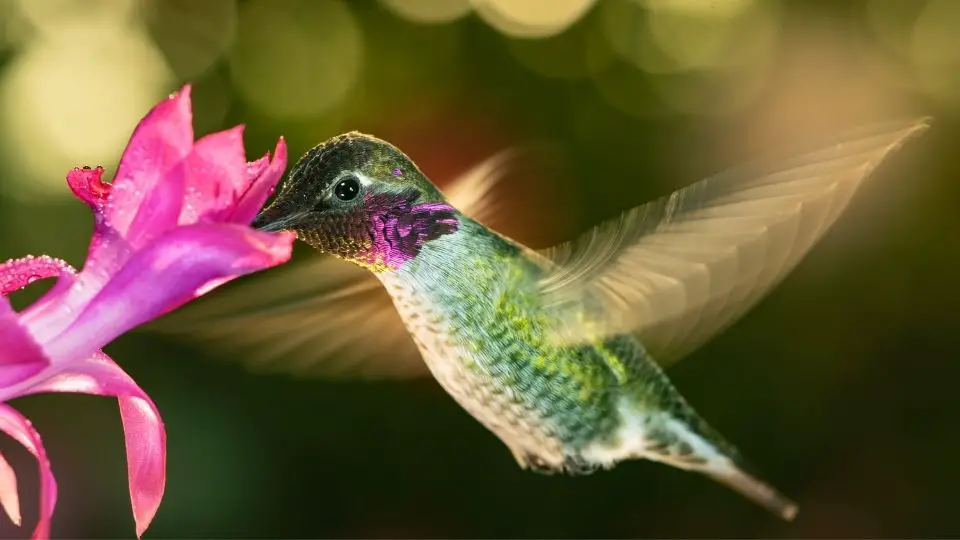
The Digestive System
The hummingbird tongue is W-shaped with hairs that store nectar. They don’t have a lot of taste buds on the tongue. The crop is the sac where all the nectar goes. After sitting there, it goes through the esophagus.
Hummingbirds generally have a high metabolic rate, and they are tiny birds.
Body Temperature
Hummingbirds usually have a body temperature of 40ºC (104ºF), dropping a bit during the night.
Hummingbirds’ bodies are great – during the winter, to maintain body temperature, hummingbirds enter torpor, a metabolic state similar to animals who go under hibernation – their metabolism slows down significantly to conserve energy.
Bones
Hummers have about eight pairs of ribs, and the pectoral muscles and wings are attached to their sternum. The wings are connected to the sternum through a ball-and-socket joint that allows them to fly the way that they do.
Hummingbirds have about 14 to 15 neck vertebrae.
Respiratory system
Breathing works the same as most vertebrates: the air gets through the nose and enters the lungs. The lungs have a couple of air sacs that help the hummer move air in and out more easily when it moves.
Mouth
A hummingbird’s bill is longer than its body, and it ingests nectar the same way a cat or a dog does. So hummingbirds don’t slurp their nectar, as it was commonly thought.
The bill shelters the extended tongue. When a hummingbird eats nectar, its tongue extends and contracts frequently. It also extends to be able to take more in. Hummers don’t have a lot of taste buds and salivary glands.
Eyes
Apart from the regular eyelid, hummers have a nictitating membrane like a second eyelid. The eyes are also protected by ossicles – tiny bones that surround them.
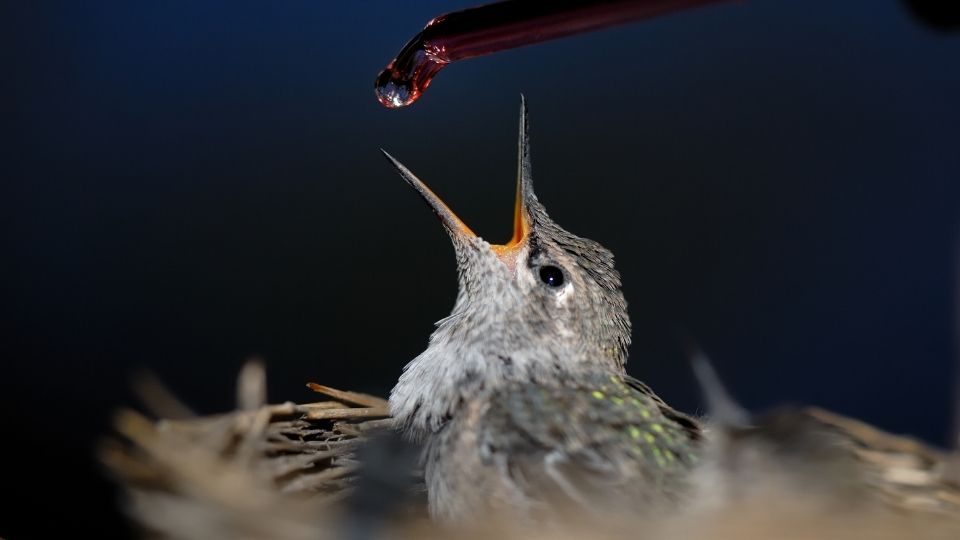
Reproductive System
When breeding season is over, hummingbirds’ testes and ovaries shrink in size. The reproductive organs function only when mating.
When hummingbirds become mothers, their belly feathers fall off – that way, they can better warm their eggs.
Muscles
Their chest and wing muscles make up about 10% of their bodies.
A hummer’s shoulder can have a 180-degree motion – and the wings move almost in a perfect 8-figure motion. Hummingbirds have unusual pectoral and supracoracoideus muscles which contain only red fiber – perfect for long-term use.
The hummingbird’s wings are the real star of the show. That’s because we’ve never seen anything like this in a bird. They can fly in any direction, including backward. Their wings beat 70 and 200 times per second, which is nothing to scoff at.
Sight, smell, and touch
With so much protection, hummers must have a fantastic vision. But they don’t have a sense of smell. Their sense of taste and touch is also under-developed.
Hummingbirds also have their syrinx developed outside of the thorax area, where other avian and songbird species typically have their acoustic vocal box inside the thorax.
Feathers
Hummingbirds have small feathers underneath the big feather on their tail – these are called under tail coverts.
The hummer’s most impressive feature – the iridescent colors that males carry in their gorget are a delight for any eyes – each so unique, shimmering, and beautiful. They can range from purple, green, blue, rufous, or a combination of more colors.
Check Out Our Favorite Books About Hummingbirds
Paperback Version


